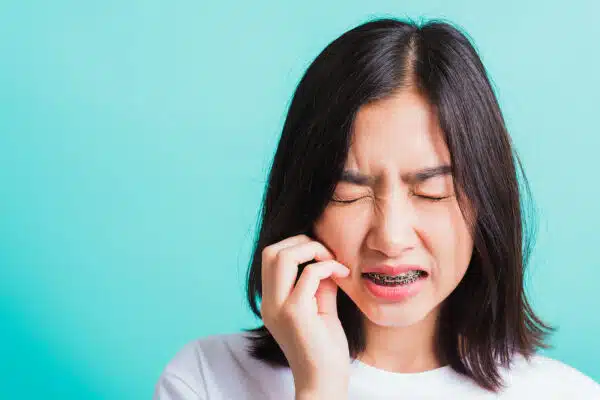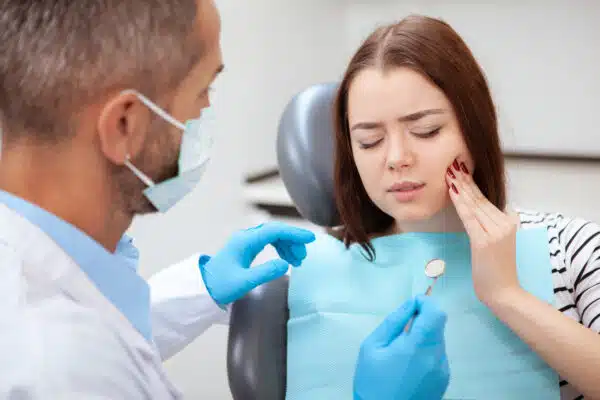Orthodontic kits are now sold online as an easy fix for crooked teeth. These do-it-yourself options promise straighter smiles without office visits or high costs. While the idea may sound appealing, orthodontists warn that skipping in-person care can lead to serious problems. Without proper exams or supervision, these kits can cause more harm than good.
What Are DIY Orthodontic Kits?

DIY orthodontic kits usually include impression materials or a 3D scan tool, followed by a set of clear aligners mailed to your home. The goal is to straighten teeth without seeing a licensed orthodontist. Companies advertise these services as fast and affordable, which appeals to people looking for an alternative to traditional braces or Invisalign.
However, these kits skip some of the most essential steps in orthodontic treatment: diagnosis, monitoring, and in-person adjustments.
The Risks Behind DIY Braces and Aligners
Orthodontists often see patients after DIY treatment has gone wrong. Without direct supervision and diagnostic imaging, these kits can do more harm than good. Below are the main orthodontic concerns:
Lack of X-rays or Full Evaluation
Orthodontists don’t start treatment until they assess bone structure, gum health, and underlying problems. DIY kits don’t require dental x-rays or a full dental exam. This means users may start treatment with cavities, bone loss, or misalignment that needs surgical care.
Improper Tooth Movement
Orthodontic movement must happen gradually and with controlled force. When done too fast or without precision, it can damage teeth, roots, and supporting bone. DIY kits often rely on algorithms rather than clinical judgment, which may not work for people with unique bite issues.
No Monitoring or Adjustments
Orthodontists track progress during regular visits. They adjust appliances, catch issues early, and prevent complications. DIY users don’t get this kind of feedback. If something feels off, they usually have to submit photos online and wait for a response.
Gum and Jaw Damage
Without proper direction, DIY treatment can trigger gum recession, uneven tooth pressure, and even jaw pain. If users have untreated periodontal disease, aligners can worsen it quickly.
What Orthodontists Say About DIY Kits
Orthodontists don’t dismiss the idea of affordability. They understand the desire to find budget-friendly care. But they believe safety and success depend on proper supervision.
Dr. Keith Blankenship and Dr. Paul Johnson of Orthodontic Specialists of Palm Coast have seen several patients who used mail-order aligners first. Some had relapsed results, while others developed serious issues that required surgery or retreatment.
They recommend that anyone considering teeth straightening should start with a full consultation, especially to rule out conditions like impacted teeth, TMJ disorders, or bone loss. As trusted providers of Invisalign in Palm Coast, they help patients explore safe, effective treatment options that fit their goals.
Common Problems Patients Report After DIY Treatment
1. Teeth that shift back
Users often don’t receive a proper retainer or neglect retention after treatment, which causes teeth to move back into place.
2. Misaligned bites
Aligners focus only on front teeth and cosmetic changes. They usually can’t fix bite alignment, which affects how you chew and speak.
3. Nerve damage
When teeth move too quickly or incorrectly, they can damage nerves, leading to long-term sensitivity or even dead teeth.
4. Costly repairs
Many patients spend more correcting damage than they would have with professional treatment in the first place.
Why In-Person Orthodontic Care Matters
Accurate Diagnosis
Orthodontists use advanced imaging like CBCT and digital scans to see teeth and bone in detail. This allows them to plan safe, effective movement that matches your specific needs.
Continuous Care
You won’t get sent home with a set-it-and-forget-it plan. Orthodontists make adjustments, respond to changes, and protect the health of your gums and jaw throughout treatment.
Professional Judgment
Every case is different. Orthodontists consider things no algorithm can—like facial growth patterns, oral hygiene habits, and bite force.
Safer and Stronger Results
In-office care leads to better, longer-lasting results. Patients also get a clear plan for retention after braces in Palm Coast, which helps prevent relapse.
What to Do If You’ve Already Used a DIY Kit
If you’ve already tried DIY aligners and something feels off, don’t wait for it to get worse. Schedule an evaluation with a licensed provider. A qualified orthodontist in Palm Coast can assess the damage, offer retreatment options, and help avoid future problems.
A Better Way to Straighten Teeth in Palm Coast
Orthodontic Specialists of Palm Coast provides safe, supervised orthodontic care using the latest technology. Our team offers traditional braces in Palm Coast, clear aligners, early orthodontics, and advanced imaging to treat patients of all ages. You won’t find a one-size-fits-all approach. Dr. Blankenship and Dr. Johnson create plans based on your individual needs and goals.
The office welcomes children, teens, and adults looking for a comfortable and modern approach to care. We also offer flexible financing, accept major insurance plans, and walk you through every step of the process.
Conclusion
DIY orthodontic kits may seem tempting, but they come with serious risks. Without X-rays, clinical monitoring, and in-person care, you’re gambling with your smile and your health. Orthodontists across the country agree—teeth straightening should always begin with a licensed provider.
If you’re thinking about aligners or braces, trust a team that puts your safety first. Book your consultation with Orthodontic Specialists of Palm Coast today.
FAQs
What should I do if I already used a DIY kit?
Visit an orthodontist immediately. They can check for damage, bite problems, or improper movement and recommend safe corrections.
Are DIY aligners approved by dentists?
Most are not supervised by licensed providers. While some may have virtual reviews, they lack full diagnostics and oversight.
Can DIY kits fix bite problems?
No. These kits usually focus on cosmetic front-tooth adjustments and cannot address deep bites, open bites, or crossbites.
Is Invisalign safer than mail-order aligners?
Yes. Invisalign treatment happens under the supervision of a licensed orthodontist, with scans, x-rays, and frequent checkups.
Do DIY kits save money?
Initially, yes. But many patients end up paying more to fix issues later. Professional care prevents problems before they start.


